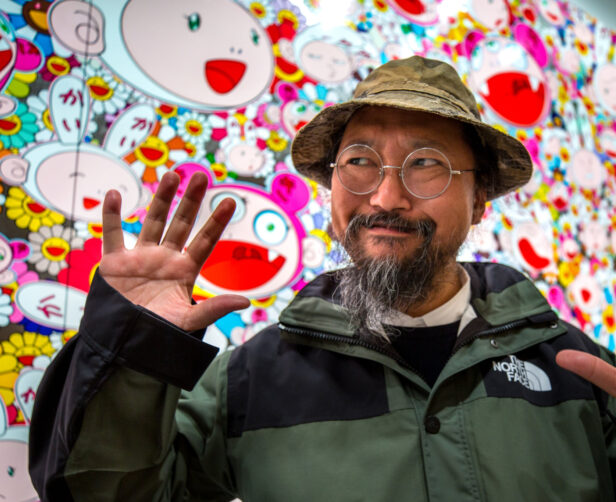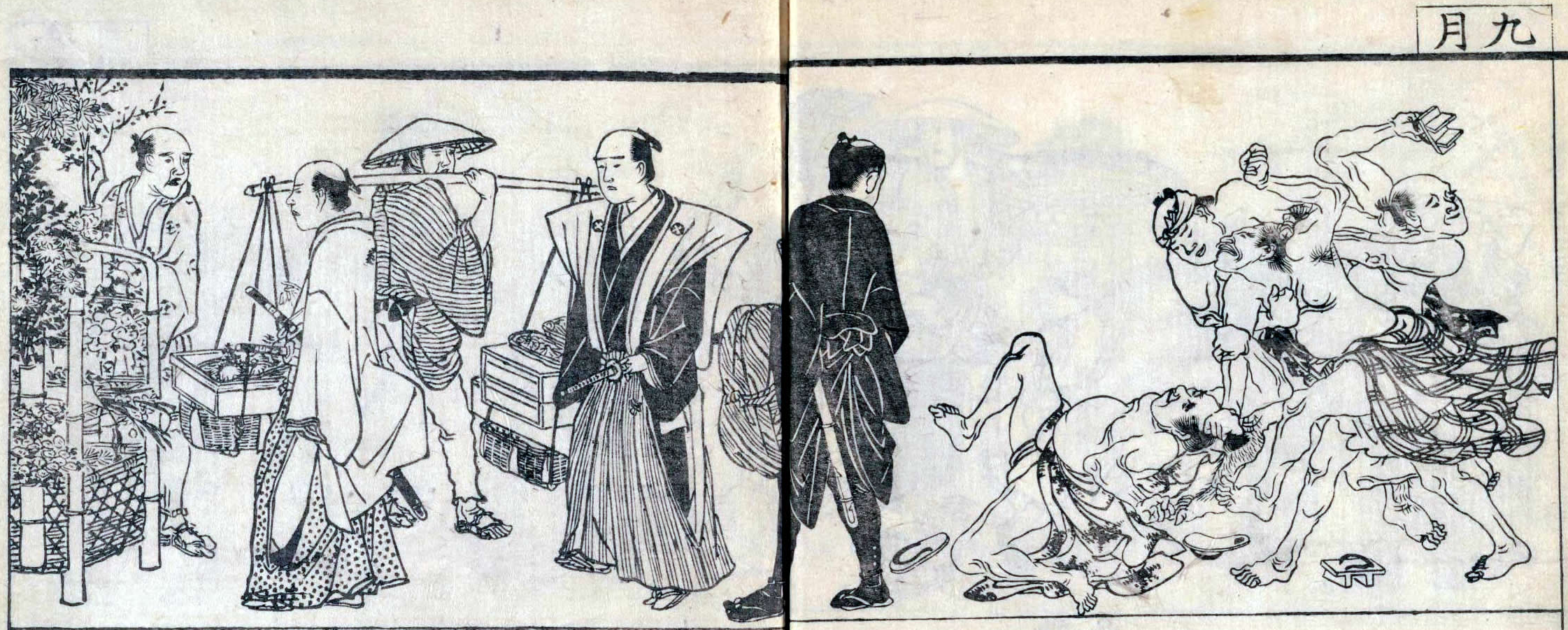The Superflat Movement curated by Japanese artist Takashi Murakami has influenced the art and fashion world since the early 2000s. Artists such as Yoshimoto Nara and Aya Takano have been involved in this movement and are still relevant today.

Takashi Murakami, via Wikimedia Commons
The Superflat Movement refers to the Japanese postmodern art movement curated by Takashi Murakami, inspired by two-dimensional images commonly found in anime and manga. Coined in 2000, the term “superflat” is a reference to the lack of perspective (or in other words, the tendency to make “flat” art) in the postwar Japanese art world. Tokyo native Murakami is best known for his vibrant-colored, bold works– specifically his flower motifs– and for blending traditional Japanese art with contemporary art. The Superflat exhibitions of 2000 featured works of other Japanese artists that fall under this “superflat theory” that is a blend of anime and visual art of the historical Edo Period.

Santō Kyōden, Shiji no Yukikai, 1798, via Wikimedia Commons
Yoshitomo Nara
Japanese artist Yoshitomo Nara was one of the first to participate in this movement in 2001, when the exhibition traveled to the United States. Nara’s artworks are often described as cartoon-like imagery that represents childhood emotions. His signature doe-eyed children caricatures appear wearing a range of emotions on their faces and are usually alone which, according to Nara, represent the loneliness of his own childhood.

Yoshitomo Nara, Missing Mariana, Suni, Christina, 2005, via Wikimedia Commons
The color palette in Nara’s works are mostly neutral colors on canvas, paper and corrugated board. His other works include hastily drawn sketches, ceramic sculptures, and photographs. Though he was born and raised in Japan, Nara’s exposure to American music– particularly punk rock music– influenced his work, allowing him to synthesize Japanese and Western art. He is also influenced by fairy tales, social commentary, and personal childhood experiences, making some of his pieces autobiographical. His I DON’T MIND, IF YOU FORGET ME solo exhibition in 2001 was presented at the Yokohama Museum of Art in Japan, featuring his multidimensional approach to art. The book of the same title by Taro Amano documents Nara’s creative process. Nara has had nearly 40 solo art exhibitions since the mid 1980s. His artworks have been shown at the Museum of Modern Art and the Los Angeles County Museum of Art.
Aya Takano
Another notable artist involved in the Superflat movement is Japanese artist Aya Takano whose paintings are dreamy futuristic, science fiction imagery. Takano is influenced by sci-fi and mysticism novels her father had her read at an early age, specifically the manga Phoenix by Osamu Tezuka. Aside from being a painter, Takano is also a sci-fi essayist and manga artist, represented by artistic production studio Kaikai Kiki created by Murakami in 2001. As a contemporary artist, her work has been widely recognized for her blend of androgynous girls and animal imagery, usually within a cosmic world. After the 2011 tsunami that hit northeastern Japan, Takano developed a much different artistic approach in which she showcases her deep respect towards nature. Her works can be found at the Museum of Contemporary Art in Los Angeles and the Rubell Family Collection in Miami. Her exhibition titled Aya Takano: Reintegrating Worlds features her artworks and comic book novel Cosmic Juice.

Aya Takano, Potato, 2000, via Wikimedia Commons
Murakami’s Superflat art movement paved the way for promoting Japanese artstyle internationally, particularly anime, and integrating it into fine art and the fashion world. Murakami has worked with big fashion icons such as Louis Vuitton, the brand Supreme, and even Vogue Magazine. Aya Takano has worked with Japanese fashion brand Issey Miyake in 2004 while Nara has joined forces with designer clothing brand Stella Mccartney in 2021.
The Superflat Movement played a major role in impacting American culture and continues to be relevant today.
